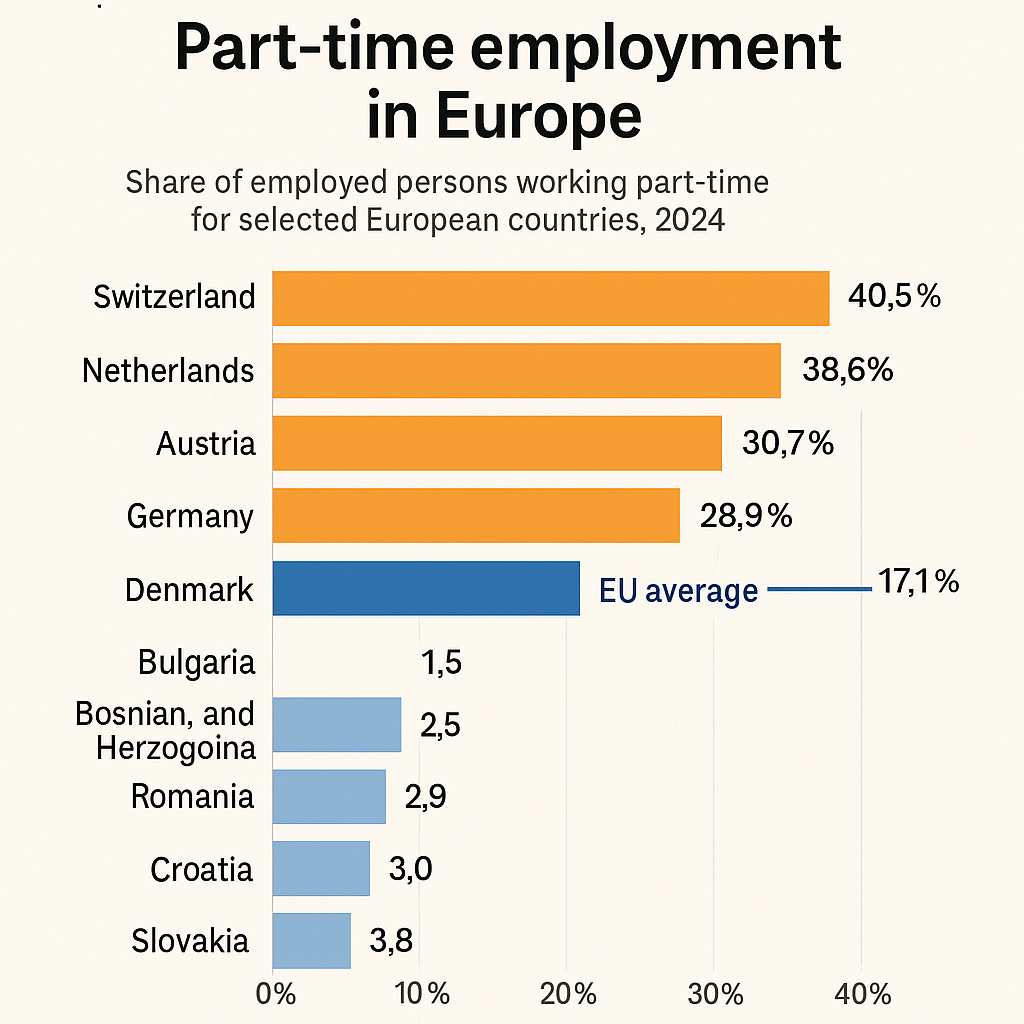Eurostat’s fresh 2024 data on part-time employment across Europe shows striking contrasts in how people work across the continent.
Key Takeaways
- EU Average: Around 17% of all employed people in the EU work part-time. This figure has been relatively stable over the last decade.
- Western vs. Eastern Divide: Western and Northern Europe report very high shares of part-time jobs, while Eastern and Southeastern Europe remain at extremely low levels.
Countries with the Highest Rates (2024)
- Switzerland – 40.5%
- Netherlands – 38.6%
- Austria – 30.7%
- Germany – 28.9%
- Denmark – 23.5%
These countries stand out for deeply ingrained part-time cultures, often tied to work-life balance policies, flexible labor markets, and social expectations.
Countries with the Lowest Rates (2024)
- Bulgaria – 1.5%
- Bosnia and Herzegovina – 2.5%
- Romania – 2.9%
- Croatia – 3.0%
- Slovakia – 3.8%
In these economies, part-time jobs are almost nonexistent, reflecting cultural norms, economic structures, and often lower wages that make full-time work the default.

Gender Imbalance
The data (not shown here but included in Eurostat breakdowns) highlights a consistent gender gap: women are far more likely to work part-time than men, especially in Western Europe. In countries like the Netherlands, over half of women are employed part-time.
Stability Over Time
The overall EU trend shows little change since 2015: part-time shares grew slightly until 2015, then stabilized. Even crises such as COVID-19 had only limited impact on long-term patterns.
What Stands Out?
- Switzerland and the Netherlands are outliers, with more than double the EU average.
- Eastern Europe remains at the bottom, showing a completely different labor culture.
- The gender divide persists, linking part-time work with caregiving roles.
Conclusion
Part-time employment is not just a statistical measure—it reflects cultural expectations, social policies, and economic realities. For some countries, part-time jobs mean flexibility and balance. For others, they remain rare exceptions.
For more updates and insights, follow me on X.